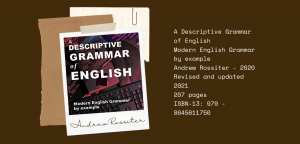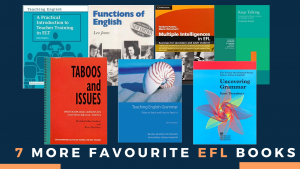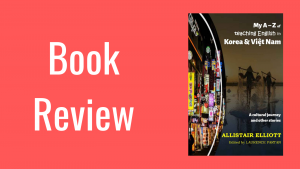Teaching Tracks: Book Review: Chris Walklett,
I first came across Chris Walklett’s work in the academic presentations and conference appearances he made in the years leading up to this publication. He has long been an advocate for the use of popular song in the classroom. and has built a solid pedagogical foundation that underpins this publication (as explored in the teacher edition of the book). ‘Teaching Tracks: Top Ten’ introduces an innovative approach to the use of popular songs as an EFL/ESL resource for lyrical analysis and thematically-focused language tasks.
This engaging and beautifully presented book is constructed around ten songs, including legacy tracks from David Bowie, Pink Floyd, Squeeze, Frankie, Goes to Hollywood, Fleetwood Mac (1969-84). And more modern tracks from Ed Sheeran, Katie Perry, Lily Allen, Just Jack, and a later REM track (2006-2013). This provides a set of interesting song lyrics from a range of rock and pop styles and a mixture of British and American singing voices.
Each song is presented as the basis for a ‘unit’ of teaching tracks material, with at least a dozen diverse language-focused activities which cover all of the language skills – reading, listening, writing, and speaking. As well as a variety of tasks relating to vocabulary, grammar, and pronunciation.
For example, the unit on Ed Sheeran’s ‘The A Team’ includes:
- a preliminary discussion based on the video (to be watched silently),
- a task requiring ‘cautious language’,
- two reading activities,
- vocabulary tasks on adjectives, collocations, compounds, mondegreens, and taboo subjects,
- analysis of incorrect grammar usage,
- a writing task proposing a happy ending to the story, and
- several speaking tasks.
The book is very clearly structured with a useful ‘unit overview’ – showing the thematic, lexical and grammatical focus of each unit’s activities, as well as a helpful set of EFL-focused appendices, including language rules and a unique phonetic chart with words that relate to the book’s content. The tasks avoid what Walklett refers to as the ‘gap-fill trap’. Instead of using the song lyrics as a stimulus for analysis and wider discussion of the themes. Each unit also includes extended reading texts which explore the subject of the song from different perspectives and takes the study beyond the usual boundaries of song analysis. A great example of this is the passage on the evolution of women’s rights in the UK, within the unit on Katie Perry’s Roar’.
The song choices do not shy away from controversial issues – such as drug abuse and prostitution. This means the book could be seen as a genuine, uncensored representation of popular culture (and by extension, modern life). However, it might be too ‘warts and all’ for some teaching settings. Subsequently, for younger students, it is likely that this book would need to be used selectively, although it is clear throughout that this is a book of resources for teachers to select from, rather than a self-study course, and the more sensitive issues are very clearly labelled.
This uncensored social focus, however, does bring us to a significant subtext of this book.
Popular music frequently faces us with uncomfortable truths about society and this book seems to share that ambition. With a social agenda that presents many of the moral dilemmas and ethical questions of our time. Such as female empowerment (Katy Perry’sRoar’), social disenfranchisement (Lily Allen’sLDN’. And Ed Sheeran’s ‘The A Team’), materialism and greed (Pink Floyd’sMoney’), mental health and wellbeing (Fleetwood Mac’sDon’t Stop’). And issues of love and sexuality (Frankie Goes to Hollywood’s Power of Love’).
In essence, this material would fit easily as a partner to an ‘ethics and philosophy’ or ‘social studies’ curriculum, especially in an international school setting. Where language learning and subject content integrated in Content Language Integrated Learning (CLIL) or Content-Based Learning (CBL) contexts. As mentioned earlier, there are also plenty of extended reading tasks with glossaries and group speaking activities, which could really help stretch the thematic focus into this broader educational terrain.
The teachers’ edition of the book contains a wealth of useful information, including a step-by-step introduction to how to use the book, a Frequently Asked Questions (FAQ’s) page, and a fully referenced academic justification for the pedagogical approach (just in case some curmudgeon questions your use of Lily Allen in the classroom).
I recommend that any teacher follows the instructions and makes sure they are very familiar with the songs before attempting to use this material. The teachers’ book does hold many answers to potentially difficult questions and it also includes advice on which chapters to avoid insensitive teaching situations.
One of the challenges of referencing song lyrics in published texts is the risk of contravening copyright law.
This book circumvents the issue via a series of QR codes that link to websites including YouTube and AZLyrics. But it means that careful preparation before class is advisable.
On reflection, the book could have spread the number of tasks across a larger number of songs, as each unit probably has a few too many activities if the song does not resonate with the student. But the diversity of activities does serve as a model of what a rich resource song lyrics can be. In terms of the difficult issue of song choice, the older songs are part of a ‘classic period’ of popular songwriting. This was before the parents of most students were born and the ‘modern’ songs are already over five years old in a world where breakfast is ancient history by lunchtime.
I think I am probably not alone in feeling that the older material will last in the memory much longer than the newer material. That is not to question the song choices here (the activities justify the inclusions), so much as to hope that this book is the beginning of a series or even a new pedagogical approach that provides teachers with a template to build popular songs of all sorts into their curricula.
Overall, ‘Teaching Tracks: Top Ten’ is a very exciting publication that will really engage younger and older English students alike. The most exciting thing about this publication is the doorway that it opens in providing a new, diverse set of models for the use of song lyrics in the classroom.
Long live rock and roll… in EFL!




